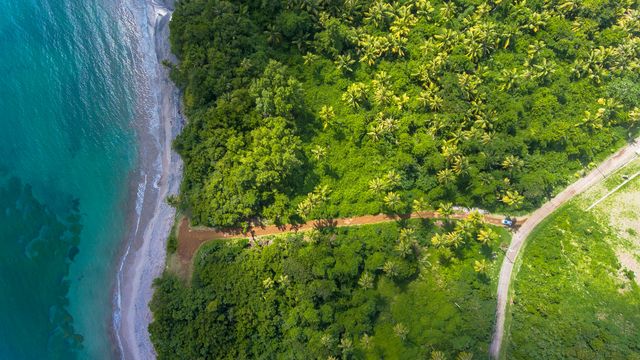We’ve updated our Privacy Policy to make it clearer how we use your personal data. We use cookies to provide you with a better experience. You can read our Cookie Policy here.
Stay up to date on the topics that matter to you
From November 11–20, world leaders and delegates will congregate in Belém, Brazil, for COP30.
Held annually, the United Nations COP summits are an opportunity for world governments, scientists, activists, lobbyists and journalists to come together on the global stage and examine the progress made on climate targets as well as to hammer out policy and funding agreements for future climate action.
COP30 marks 10 years since global leaders signed the 2015 Paris Agreement – a legally binding international treaty on climate change – during COP21, held in Paris, France. Signatories to the Agreement committed to keeping global warming “well below 2°C above pre-industrial levels” by the end of this century.
With COP30 being held in Belém, the north-eastern gateway to the Amazon rainforest, delegates will be forced to confront the climate emergency head-on, COP leaders say, with forests and biodiversity expected to be a key talking point across the summit.
COP stands for the “Convention of the Parties”, with the “parties” being the signatories to the UN Framework Convention on Climate Change (UNFCCC).
The first UNFCCC was launched for signature at the 1992 Earth Summit in Rio de Janeiro, Brazil. Since the first COP conference (Berlin, Germany, 1995), the COP has met annually to assess the measures taken by the parties and the progress made in combating climate change.
COP summits have been the site of many foundational agreements and advances in the fight against climate change.
With COP30 falling on the 10th anniversary of the signing of the Paris Agreement – and taking place in Brazil for the first time since the creation of the UNFCCC – this meeting of COP could be especially critical.
“It is over three decades since the UN Framework Convention on Climate Change was signed at the Earth Summit in Rio de Janeiro in 1992. Its main objective of ‘stabilization of greenhouse gas concentrations in the atmosphere at the level that would prevent dangerous anthropogenic interference with the climate system’ remains elusive,” said Ken Byrne, a professor at the University of Limerick and principal investigator at the Co-Centre for Climate + Biodiversity + Water, in statements given to the All Ireland Science Media Centre.
“The science is clear, not only do we need to act now, we also know what we need to do. Hopefully, COP30 will bring new and tangible commitments that will help avert the climate crisis.”
COP30 will take place on the fringes of the Amazon rainforest, against this backdrop of growing urgency.
To ensure focus on a wide range of relevant issues, COP30 has identified six major themes that will form the basis of its “Action Agenda” priorities: Energy, Industry and Transport; Forests, Oceans and Biodiversity; Agriculture and Food Systems; Cities, Infrastructure and Water; Human and Social Development; and Cross-cutting issues.
In line with this, the conference has been split up into a series of “Thematic Days” that will aim to address each of these Agenda themes.
In addressing these themes, the COP30 organizers aim to enable people from every walk of life to “see where they belong in this agenda” and to “connect negotiations with real-world impact.”
As Dr. Samantha Hallam, an oceanographer and climate scientist at the Irish Climate Analysis Research Units (ICARUS), Maynooth University, told the All Ireland Science Media Centre, the real-world impacts of climate change are being sorely felt in the Caribbean at this moment.
“As world leaders gather for COP30 next week, the devastating impact of Hurricane Melissa will loom large over discussions. The storm, the strongest Atlantic hurricane on record, made landfall in Jamaica as a category 5 hurricane on Tuesday, October 28, with maximum sustained winds of 185 mph, tearing through communities and leaving widespread destruction in its wake,” Hallam said.
“Ocean waters in the region were about 1.4°C warmer than the 1979–2000 average. According to the TOPIM model, that heat anomaly contributed to [Hurricane] Melissa being roughly 40 mph stronger than it would have been under normal conditions – an increase that generated 1.6 times more destructive force and catastrophic damage across the island.”
“At COP30, the crisis in the Caribbean has become an urgent reminder that climate change is not a distant threat but a present emergency. What is needed are bold emissions cuts and increased climate finance for less developed countries – those least responsible for global emissions but most vulnerable to their impacts.”
As a part of the Paris Agreement, parties are to make updated pledges known as Nationally Determined Contributions (NDCs) every five years that lay out how they are going to cut emissions and tackle climate change. Parties were supposed to submit their commitments for 2035 in February this year, but 95% of governments missed this deadline. After being given an updated submission date of this September, many governments still have yet to update their commitments, and among those that have been submitted, many may not be ambitious enough.
“From those [NDCs] received until now, there is an expectation of a reduction of emissions of 10%. We would need 60% [to stay within 1.5°C]. So overshooting is now inevitable,” said UN Secretary-General António Guterres in a pre-COP30 interview with The Guardian.
In an ideal world, COP30 can play an important part in underscoring the urgency of the climate crisis and the need for bold, transformative commitments.
“10 years on from the Paris Agreement, COP30 is hugely significant as it is the first COP meeting to take place since the Global Stocktake of the collective progress towards achieving the purpose and long-term goals of the Paris Agreement,” Professor Brian Ó Gallachóir, associate vice president of sustainability at University College Cork, told the All Ireland Science Media Centre.
“Prior to the Paris Agreement, we were heading for a global temperature increase of 4 °C above pre-industrial levels; now we are on track for a 2.1–2.8 °C increase. This is, of course, not enough,” Ó Gallachóir continued.
“Countries are required to bring new revised commitments to Belém in order to bridge the gap between where we are now headed and the agreed limit of global warming of 1.5 °C. About one third of countries globally (i.e., 68 countries that do not include Ireland) have submitted new Nationally Determined Contributions already, and according to the UN, this new generation of NDCs show a step-change in terms of quality, credibility and economic breadth. A lot rides on COP30 as we are expecting the remaining countries to announce their new commitments at Belém.”




